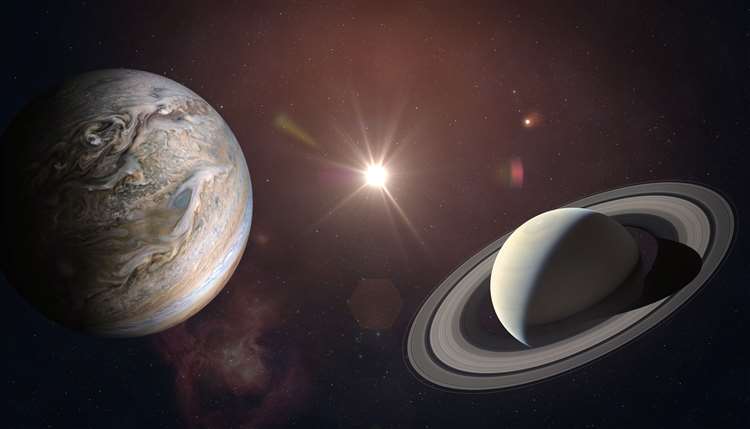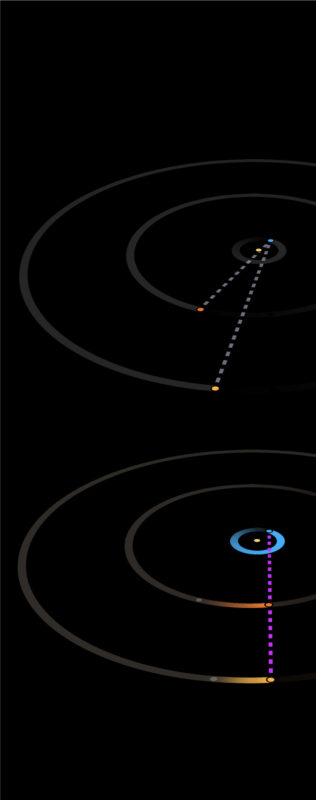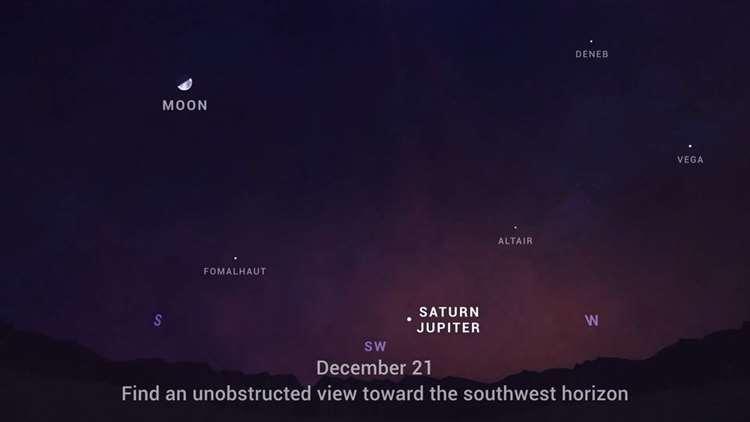There is Much to See in December 2020

THE SAN JUAN STARGAZERS SUGGEST WE END 2020 LOOKING UP
There are times when the night sky gets exceptionally interesting & even exciting. That is what happened during the last 50 years that the ancient people lived at Chimney Rock. You can learn more about it at any of our Night Sky Programs given from May to September on two Friday nights each month. The dates for 2021 have not been set as yet, but check out our web-site: sanjuanstargazers.org in a few months. Plan on coming to one of our programs this summer. If you are a local, you do not have to pay extra for a reservation, but just arrive early (not sure of the regular cost) & we should be able to include you.
December 2020 is one of those times when interesting things are going on in the sky. We will end this difficult year LOOKING UP & being reminded that we live IN AN AMAZING UNIVERSE. You can add your own commentary about it, if you like. It just makes me happy.

LAST TIME IT WAS VISIBLE TO HUMANS WAS MARCH 4, 1226.(800 YEARS AGO)
IT WILL NOT BE VISIBLE AGAIN UNTIL MARCH 15, 2080.
In the evening of Monday, December 21, which is the Winter Solstice, Jupiter & Saturn, the two giant gas planets of our Solar System will appear closer to each other than they have for 400 years, since July 16, 1623. In Astronomy it is called a “great conjunction.” Some people are calling this one a “Christmas Star” because a similar conjunction possibly took place the year of Christ’s birth, but included an additional planet & it was called the “Star of Bethlehem” which the 3 Wise men from the East noted to search for the Christ-child, born in a manger. Their famous gifts were Gold, Frankincense & Myrrha.
In 1623, the conjunction took place so close to the Sun that it probably was not visible. The last time it was readily visible was 800 years ago on March 4, 1226. Think of what that time period was like, called the dark ages. What did they think it was? What did it mean?? A lot has happened & changed since then.

During these first 3 weeks of December, Jupiter & Saturn are seen in the Southwestern sky in the hour after sunset each night getting closer & closer. It is also considered rare because of how bright the planets appear. It will be noticeable that the planets do not twinkle as stars do. They can be viewed best with a telescope, better with regular binoculars, but also quite well with the naked eye. So step out any night to take a look. Jupiter & Saturn are actually 400,000,000 miles apart. This conjunction will not be seen again until March 15, 2080.

I want to mention the significance of the winter solstice on December 21. As the days progress from the Fall Equinox, daylight becomes shorter & shorter. We all know the feeling of waking up & it is still dark and then in the PM the school bus arrives as the sun is setting and too quickly it is too dark to play outside. The Winter Solstice is that magical day when the daylight hours stop getting shorter and days slowly, but surely start to lengthen. That is why the Ancient people held big celebrations & it was easy for Christianity to turn this time of year into a celebration of Christ’s birth. He actually was not born in the winter.
There was & is another special event taking place in December. The Geminid meteor shower of 2020 which peaked the night of December 13, was supposed to be wonderful, but was not visible this year from my neighborhood. This meteor shower happens every year in mid-December when the Earth passes through the debris or dust trail of Asteroid 3200 Phaethon. The Geminids can generate over 100 “shooting stars” each hour. They can be exciting to watch if you are warmly dressed & have hot chocolate in hand.

The DEEP SPACE MYSTERIES CALENDARS are an annual fund raising project for the San Juan Stargazers Astronomy Club. They are a constant reminder that we live in an amazing Universe and have much to learn. Astronomy Magazine, the world’s best-selling astronomy magazine produces the calendars filled with dramatic images of nebulae, spiral galaxies, planets, star-forming regions & other mysteries of Deep Space. Many of the best Hubble photos are featured, one for each month with several paragraphs describing and giving other information, so you will learn the most important facts. After 12 unique fantastic pictures with information, you will have a basic summary of astronomy. Great for students of ALL AGES!
The days of each month detail planet visibility, meteor showers, conjunctions & other observing opportunities, as well as moon phases and major astronomical events. Wouldn’t it be cool to know what planets you are seeing any given night? And SO MUCH MORE!!! Living in Pagosa we have to take advantage & enjoy our exceptional night skies.
If you would like a calendar call 303-995-2888 to leave a message. Someone will get back to you to make arrangements for you to get your calendar. They are $15, larger than usual calendars, fabulous information & amazing pictures. Well-worth it!
The San Juan Stargazers are part of the Astronomical League, which includes clubs from all over the US. We have a web-site—www.sanjuanstargazers.org. Our club address is PO BOX 2217, P.S. 81147.